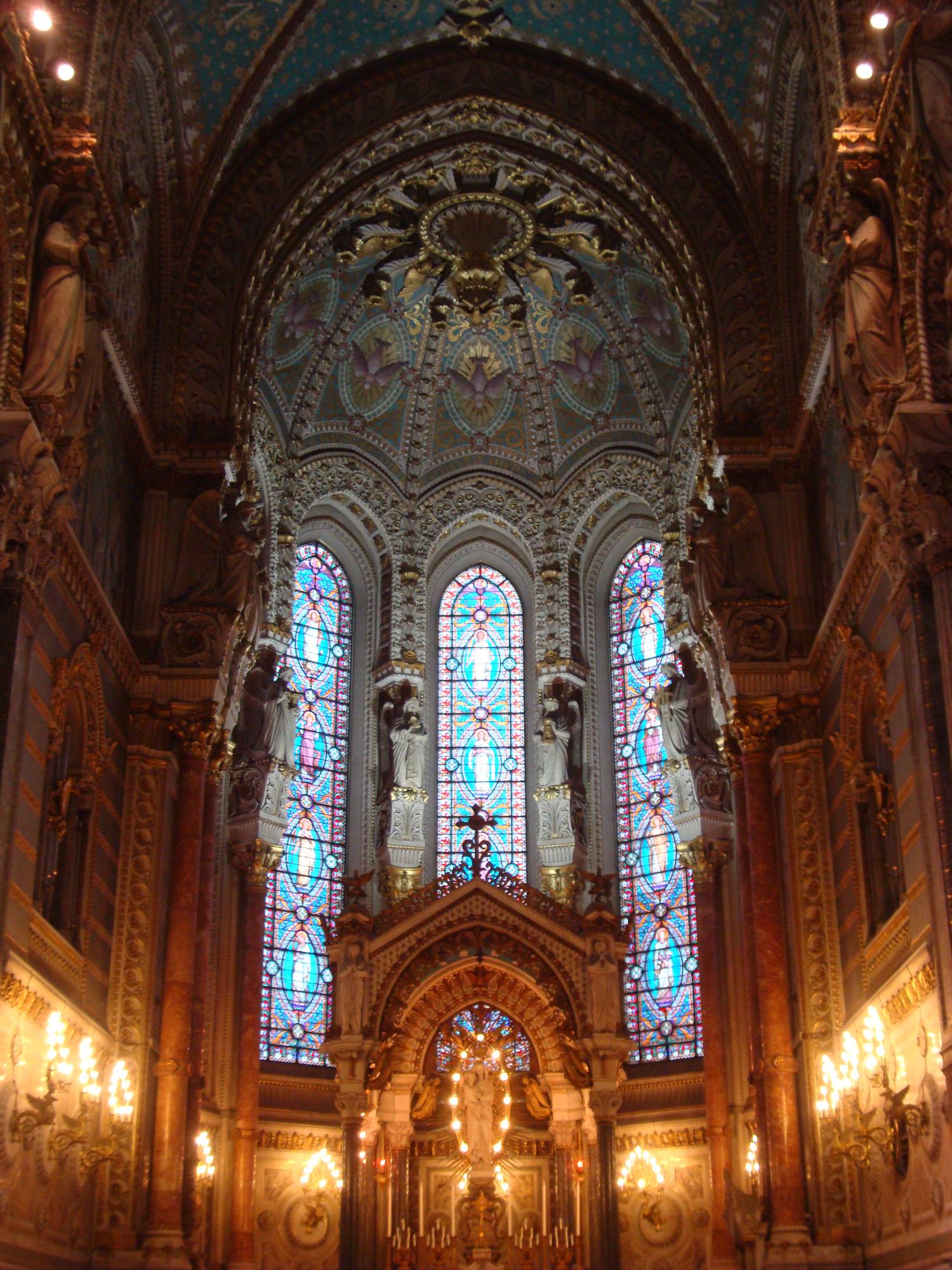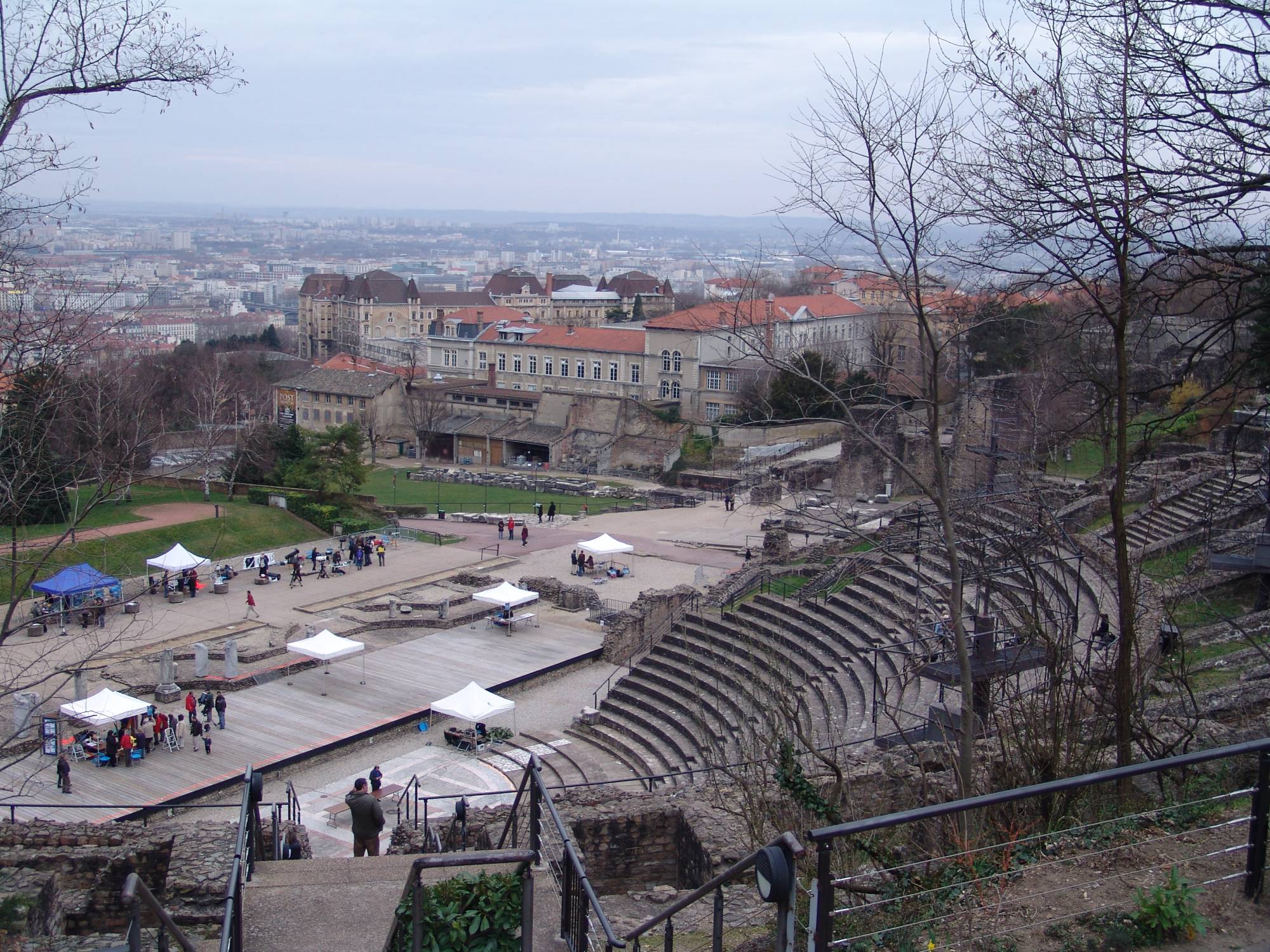Enjoying Life In Lyon
France
by Cheryl Pendry, PassPorter Featured ColumnistLast modified 07-22-2010
Ask anyone what the largest city is in France and you'd no doubt guess Paris -- and you'd right. But if you were asked what the second largest city in the country is, would you know the answer? Before we visited Lyon, I had no idea that it was, in fact, France's second biggest city, after the capital. As we drove towards it, I started to get an idea of the scale of the place, as we started to see signs for Lyon about 20 miles before we got to the centre of the city. As you'd expect from any city, the outlying suburbs aren't necessarily the most picturesque areas, but then again, they're not designed for tourists, they're designed for people to live in. However, head towards the River Rhone, and things change dramatically.

Lyon - Basilica Notre-Dame
Inside the Basilica Notre-Dame in Lyon.
Unsurprisingly, it's here that the beautiful buildings are located, as people obviously wanted to live near to the water in days gone by. Not only is the city cut in two by the Rhone, a name more synonymous with Germany, but it's also divided again by the River Saone. Of course, the location of the city, on two such important trading rivers, helps to explain why it grew to be such an important commercial centre in this part of the country.
The heart of Lyon can be found in Presqu’ile, the "near island" and that's the area between the two rivers. It’s absolutely packed with shops and restaurants and, as a result, it's a thriving place to visit. We saw it on a late Saturday afternoon and, of course at that time, it was full of people shopping and heading out to dinner.
If you’re a visitor though, you’re more likely to pass through this area, as we did, on the way to the main tourist attractions in the city. These are located on the west bank of the river Saone in Vieux (old) Lyon. It’s not a place to visit on foot if you’re not prepared for some serious walking. Because the old part of the city is on the banks of the river, of course, there’s a huge hill to climb up to get to the top, where you’ll find the Roman amphitheatre and the basilica. We drove up and were lucky enough to find a parking space at the top of the hill, but even driving, we could tell how steep some of the hills were.
Once you get to the top though, what awaits you is well worth the climb up. The Basilique Notre Dame de Fourviere was built in the late 19th century and its four gleaming white main towers and belltowers can be seen from many parts of the city. Step inside and you'll be spellbound by the mosaics in front of you on most of the surfaces, along with the stained glass windows and golden interiors. We sat there for some time, just taking it all in. This was definitely a church where statements were being made about the wealth the church had.
Walk round to the belltower end of the Basilica and you're rewarded with a view over Lyon that brings home to you just how huge this city is. It's very similar to looking across Paris from places like the Eiffel Tower or the Sacre Coeur and we were very lucky that, on the evening we visited, we had a clear view and could see for miles.
One thing we could see clearly beneath us was the Chemin du Rosaire, a path leading down the hill towards the old quarter. A few brave souls were staggering up it, but it’s definitely worth taking the funicular railway that runs from the main square below to just outside the Basilica and then walking your way back down.
This whole area was originally a thriving Roman town and there’s still evidence of that nearby with the two Roman amphitheatres. To this day, they’re still used for various performances, as was clear during our visit. They’re huge spaces, originally built in 15 BC and designed to seat 30,000 spectators. It was lovely to see them still being put to such good use today, both as a tourist attraction and a venue.

Lyon - Roman amphitheatre
The Roman amphitheatre in Lyon, still in use today.
Head down into the Old Town and some of the other delights that await you include the Cathedrale St. Jean, which was started in the 12th century. One of its main highlights is an astronomical clock, which shows religious feast days until the year 2019. This area is also home to Museum of the Gallo-Roman civilisation, which is packed with discoveries from Lyon’s Roman past, uncovered over the last five centuries.
Although it’s not a city that’s necessarily on the tourist trail, Lyon is definitely one that’s worth checking out, as it has a surprising amount to offer the visitors that take the time to head there.
Recent International Travel Articles:
Updated 07-22-2010 - Article #499
by PassPorter Travel Press, an imprint of MediaMarx, Inc.
Want to know more about International Travel?
Sign up to get our free weekly newsletter with the latest news and updates on International Travel and a 20% discount coupon.
You are in good company -- we have more than 50,000 subscribers!












